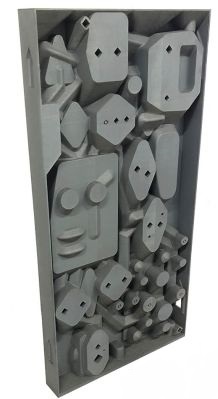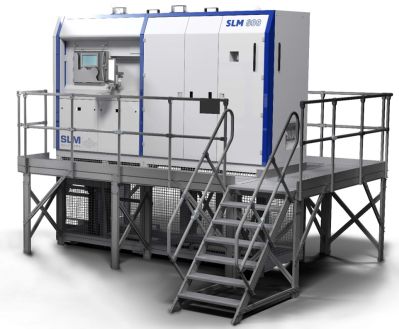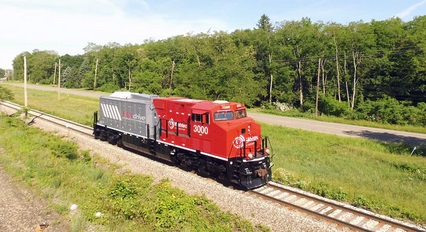Metal 3D Printing is Putting the Brakes on the Locomotive Industry
Wabtec provides equipment and systems for the freight, rail, transit, mining, industrial and marine sectors operating in over 50 countries with more than 27k workers and $8.2 billion in revenues. If you have taken a train anywhere in the last decade, there's a good chance it has components built by Wabtec. Recently, the company turned to 3D printing to create newer, greener, and more future-ready parts -- including brakes -- for trains worldwide.

Wabtec planned to redesign a brake panel weighing in at 52 lbs and comprised several different pieces. The component was built in France before being shipped for use to the United States.
The brake panel was unnecessarily heavy, which impacted the train's performance. The traditional process to manufacture the component was between 3-6 months -- resulting in an expensive cost, lengthy customer wait times and emissions from transporting the product to the United States. A better solution was needed.
After trialing several machines from various additive manufacturing companies, it was clear the system for the job was the SLM®800, using AlSi10Mg. The printer offered the speed and scalability needed for the component. Because of the sheer size of the part, it was the only system that could print a part of this magnitude.
In addition to this, its printing speed guaranteed huge benefits on lead times, making it the perfect system for the task at hand. SLM Solutions and Wabtec collaborated on engineering and manufacturing a new and improved brake panel through additive manufacturing.
"The SLM®800 provided the performance in terms of the size and speed needed to address this design challenge," said Brett Heher, Lead Mechanical Engineer at Wabtec.
VIDEO: Selective Laser Melting -- SLM 500/800
Adding to this was the factor of parameters. When used on one SLM Solutions system, they can be synced on all machines across the board, enabling Wabtec to print the part locally. This aspect further reduced lead times and the part's environmental footprint. Furthermore, they can now produce six pieces per batch, compared to just one piece with traditional methods.
"Because the brake panel is a critical part of the train, it goes through rigorous testing to qualify for certification to ensure its safety. Testing included dynamic, field, and functional testing as well as getting third parties onboard. We were able to prove that the part was able to overpass the standard values of air pressure test requested by 30%, and by 50% for the hydraulic test. Not only did the component pass the test, but its reduction to a single element from multiple pieces also mean less maintenance in the future while improving the overall safety of the train," said Henri de Chassey Additive Manufacturing leader for Wabtec Transit.

"We have since been able to reinvent the brake panel, something that has been built the same way for a long time," added Heher. "It's important to note that these are safety-critical parts. There is a lot of scrutiny by our customers."
Although additive manufacturing may still be considered unconventional compared to traditional manufacturing approaches, Wabtec's customers have welcomed the future-forward transition to additive-manufactured components. Wabtec officials believe more of the industry will resort to additive manufacturing as it becomes the standard way to build.
Wabtec envisions whole new product families being created by implementing additive manufacturing.

The company already investigated opportunities to 3D print heat exchangers and brake pads and improve their caliper.
Moving forward, Wabtec hopes that the use of the SLM Solutions' systems will open up an even more extensive product line. The company has begun to work with the smaller SLM®280 systems for smaller parts.
"We've been working with SLM Solutions for several months printing on the SLM®280 to identify heat-exchanger applications," Brett Heher explains. "We have also built these parts using other additive technologies but believe that the SLM Solutions technology makes more sense when it comes to making these parts in production due to part complexity."
Want more information? Click below.
Rate this article
View our terms of use and privacy policy ::m::